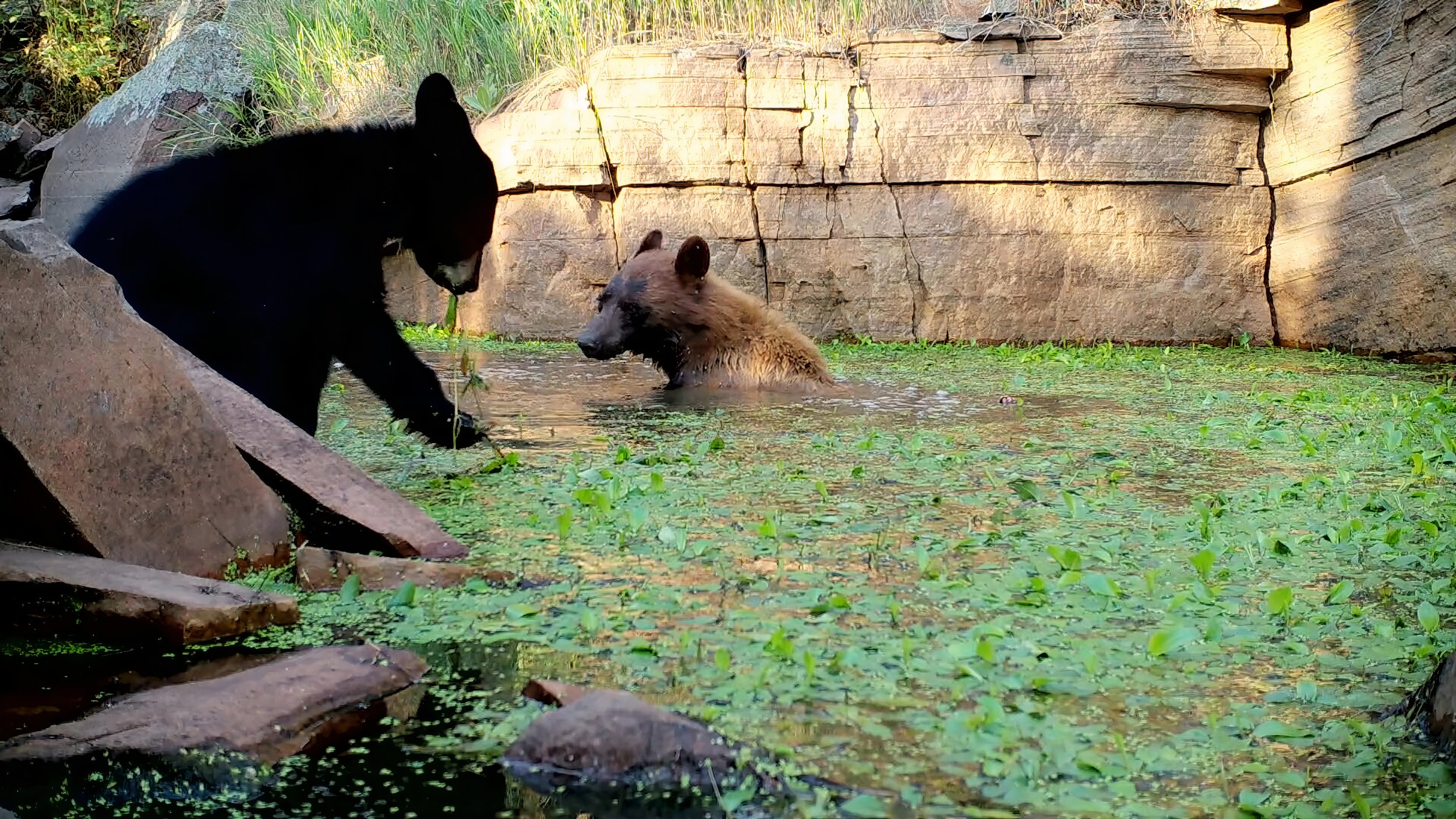
Habitat
Depending on the species and the location, black and grizzly bears often prefer somewhat different habitats, although both species can and do overlap. North American black bears are creatures of the forest, preferring extensive wooded areas with a variety of fruit- and nut-producing species and small openings that promote fruiting of many shrub species. Lowlands and wetlands are important sources of succulent vegetation. Streams and pools are needed for drinking and cooling. Trees larger than 20 inches around with strong, furrowed bark are easily climbed refuges for spring black bear cubs, and old growth trees are preferred denning sites.
Grizzly bears, on the other hand, occupy a greater range of habitats. They evolved on the tundra plains south of the ice sheets in Eurasia and are equally at home on the Arctic barren grounds, the prairie and foothills grasslands, or the thick temperate rainforests of coastal British Columbia and Alaska.
Bears don’t have exclusive territories they defend from other bears. A bear may occupy a home range that overlaps the territories of other bears and simply avoid them most of the time. A bear’s home range can change in size from one year to the next, or from one area to another, depending on the distribution of food and other resources.
Male bears tend to range over larger territories, maintaining home ranges that overlap the smaller home ranges of several females. Females with cubs will have smaller home ranges yet, especially when the cubs are less than a year old and not as mobile. A male grizzly’s home range in B.C., Alberta or in the US Northern Rockies might average as little as 500 square kilometres or as much as 2,500 square kilometres; a female grizzly might use 200 to 500 square kilometres. A male black bear’s home range averages 100 to 500 square kilometres, while a female black bear’s might be as small as 20-300 square kilometres.



